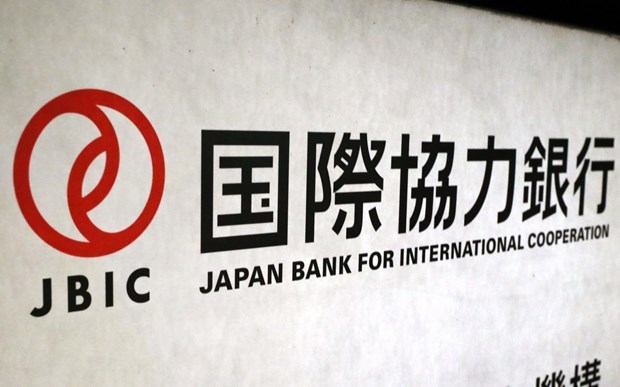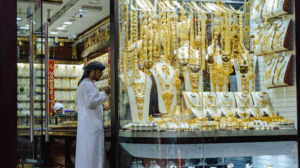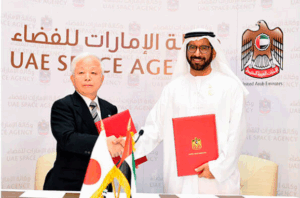Synchronicity always connects people, wherever they are and whatever they are doing. As for me, it gave me the opportunity to meet two “Men in Black” in the financial circles of the Japanese government. One of them is Mr. Shunsuke Kagawa, a legendary Deputy Finance Minister in Tokyo. Thanks to his vast human network on the national and international scene, he was powerful enough to make things happen in Japan’s national interest, while keeping a smile on his face and being very kind to his colleagues, even the youngest, and guests from the private sector. It is extremely regrettable that he had to pass away in the summer of 2015.
Subsequently, one of my mentors working on the Japan-US alliance in the intelligence sector kindly told me that Mr. Kagawa, who made a significant contribution to bringing the Japanese government closer to the leaders of the People’s Republic of China, was one of the “gold warriors” of the Japanese Imperial House. When you succeed in penetrating the Japanese financial sector, sooner or later you discover remarkable indications that there were (and still are) off-balance sheet assets indirectly linked to the Japanese Imperial House, which played (and still do to this very day) an important role on various occasions in Japan’s national interest, both during and after World War II. In this context, Mr. Kagawa is said to have been given the responsibility to partially control these assets on behalf of Japan’s “inner circles“. “That’s exactly why he could be so tough even on politicians“, my mentor once said.
Mr. Shunsuke Kagawa tried to introduce me to some important players in Japan. One day, he suddenly mentioned that I should visit the headquarters of the Japan Bank for International Cooperation (JBIC). After listening to his recommendation, I spontaneously asked him why. He quickly replied: “You should go and see Mr. Tadashi Maeda, Vice-Governor of JBIC. As soon as you meet with him, you will understand what I mean. I have just learned that he is also followed by the CIA, just like me (laughs)”. On his instruction, I paid a courtesy visit to Mr. Tadashi Maeda. However, I was still unclear as to why Mr. Kagawa had advised me to do so. During my short visit, Mr. Maeda was rather silent and stared at me, as if asking me: “Why are you here?“. What I was able to show him was only a verbal recommendation from Mr. Kagawa. The conversation was relatively short and sustained, even though I would continue to see Mr. Maeda quite often when attending international conferences all over the world.
Last year, my team worked towards setting up a venture capital company to finance a new LNG business in Japan. Our idea was quite simple: Russia and the United States wanted to sell a huge amount of LNG to the Chinese market, when they technically and strategically needed a reliable stopping point on the way to the PRC. From the Arctic Ocean, gigantic icebreakers would transport the LNG to the Far East, but exploitation costs from direct shipping would be prohibitive for the countries and players involved (the big oil and gas companies). For this reason, they began looking for a reliable intermediate port, located in a country that does not present them with security/political and economic challenges. This is where Japan could step in, and one of the candidate ports turned out to be the port of Maizuru in Kyoto Prefecture, which was famous for being Japan’s most important naval port before the end of World War II.
During intensive negotiations with Singaporean and British counterparts, members of my team made sure that the Government of Japan’s willingness was to carry out exactly the same project as we were seeking. From my team’s US source of confidential information in Washington D.C., a powerful Japanese government banker often contacted Alaskan and D.C. officials in this context, and even my British counterpart, who ran a major LNG shipping company, was directly contacted by this Japanese “Man in Black“. This man would turn out to be no other than Mr. Tadashi Maeda, who had been promoted to the position of Governor of JBIC in 2016. Having heard this information firsthand, I remembered the above-mentioned short conversation with him several years ago in Tokyo.
From my intelligence sources in Washington, D.C., his strategic intent was quite straightforward: in order to maintain the stability of the alliance between Japan and the United States, it was about time to devote a remarkable share of Japanese government investment to facilities that would allow the export of LNG from appropriate ports in Alaska, in the Arctic zone. Even though it stated that “this investment is good for Japan, both diplomatically and economically“, JBIC, one of Japan’s government financial institutions, is accountable to the Japanese taxpayer. This is why Mr. Maeda and his team have been trying to persuade the British partner to build port facilities for LNG trade at Maizuru, as we had planned.
Due to political incomprehension by the Kyoto Prefectural Government, the project could not be implemented immediately and was temporarily suspended, even though JBIC’s “Man in Black” could sometimes be felt behind the door of this story. Failing to grasp the importance of this project for world politics and the energy economy, the Kyoto Prefectural Government even refused to directly launch an official negotiation to allow my team (Kyoto-Maizuru Energy Co. Ltd.) to lend the real estate in the port for the LNG facilities. Faced with such typically Japanese domestic difficulties, an investment fund from Qatar, which had at one point shown a deep interest in the project, decided to temporarily withdraw, and the whole project was unfortunately put on hold.
In my view, Mr. Maeda, our “Man in Black” in the financial circles of the Japanese government, and his staff should give priority to the perspective that the port of Maizuru, the only intermediate port for LNG trade between Alaska and the Chinese mainland market, would allow Japan to open the country’s first international LNG exchange and to start the international trade of Japan-made LNG (this is indispensable since Japan is one of the world’s largest LNG importer). Unfortunately, the “Man in Black” from the Otemachi financial district in Tokyo seems to be heading in the opposite direction. He appears to be giving more weight to US national interests in order to stabilize its alliance with Japan. Intuitively, I sense that there is something wrong here.
I now remember the words of Mr. Kagawa, mentioned earlier. The alliance between Japan and the United States was established following confidential negotiations between the Showa Emperor and General McArthur from 1945 to 1951. All the Tokyo “Men in Black” were and are still obliged to follow this Imperial decision. If Mr. Tadashi Maeda is really one of these “Men in Black” or part of the secret team responsible for maintaining the status quo resulting from this historic decision by the Emperor at the time, his prioritizing US national interests can be considered as quite natural and plausible. But one must wonder what will happen if the circumstances that supported the previous alliance between Japan and the United States change abruptly and dramatically (which we are currently experiencing since 2018 with Donald Trump’s Administration).
Money is in constant circulation and the global agenda is now in irreversible transition. The code of conduct of the “Men in Black“, or “gold warriors“, directly or indirectly backed by Japan’s historic off-balance sheet assets, will change accordingly. The policy direction in terms of government financial investment will certainly move in line with the unprecedented geo-strategic sea change. In order to make these issues clear to all, I took this opportunity to show the reality of Japan’s shadow men.
Picture credits: Nikkei Asian Review







Be First to Comment